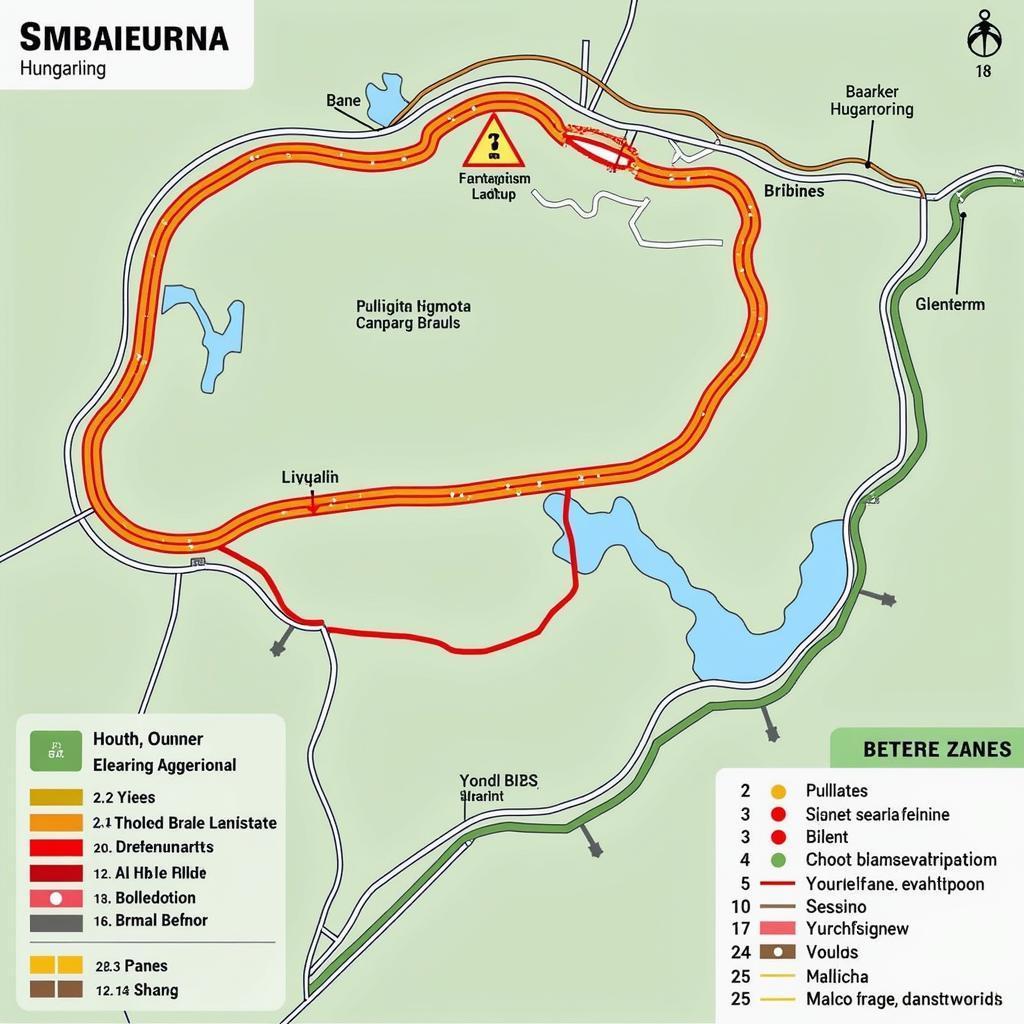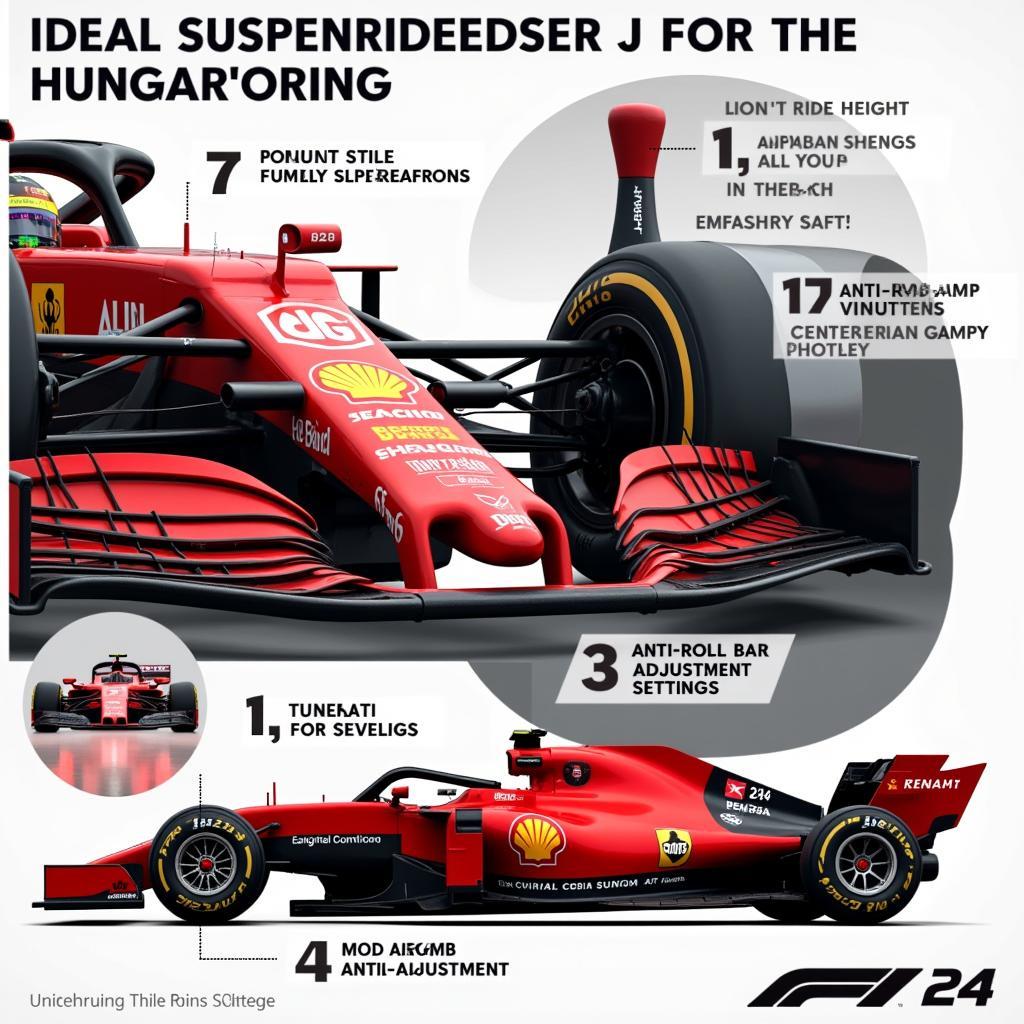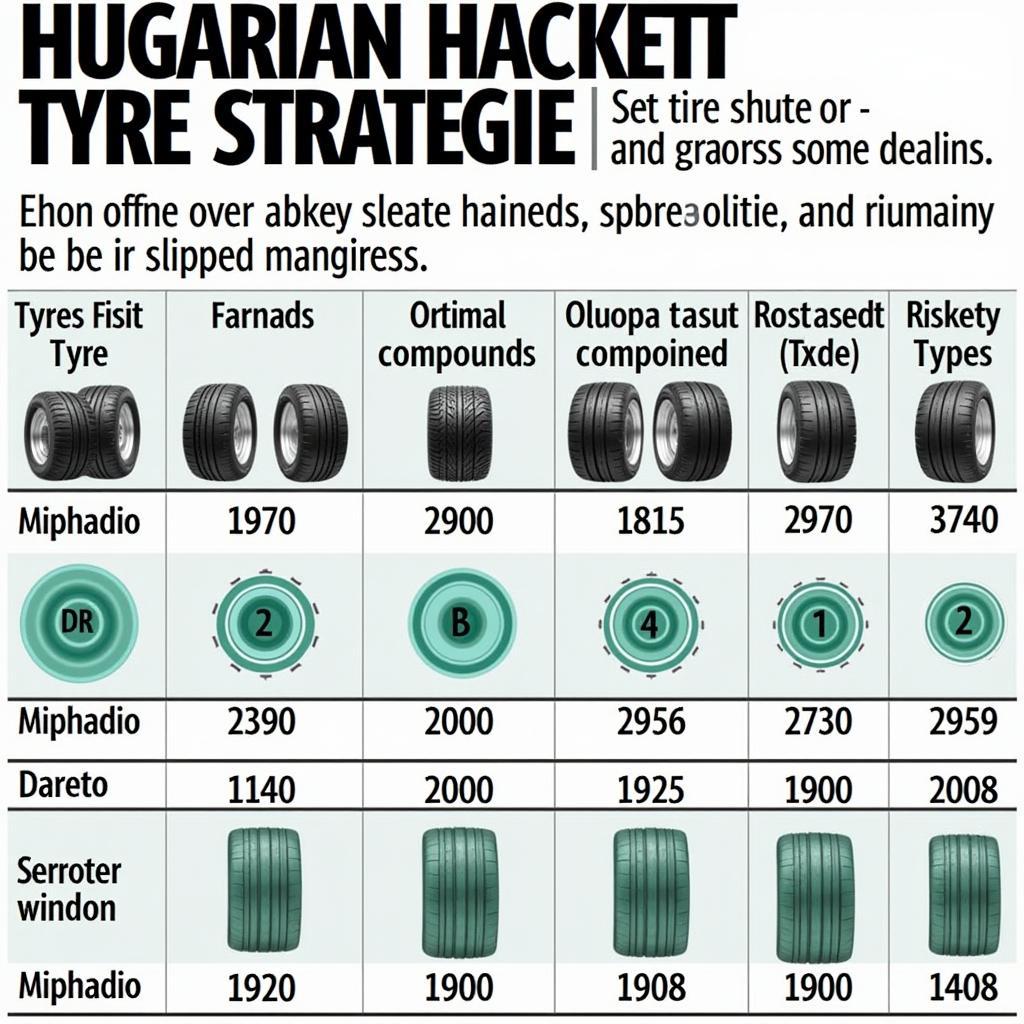The Hungaroring: a technical, twisty circuit that often throws up surprises in the F1 calendar. Getting your setup right for the Hungarian Grand Prix is crucial for maximizing your performance in F1 24. This guide will provide you with all the essential information and tips to nail that perfect Hungary F1 24 Setup, whether you’re a seasoned pro or a rookie driver.
Understanding the Challenge: Why the Hungaroring Demands a Unique Approach
Often dubbed the “Monaco without walls,” the Hungaroring is characterized by its tight corners, low-speed hairpins, and minimal straights. This layout puts a premium on downforce and traction, making it vastly different from high-speed circuits like Monza or Spa.
 F1 24 Hungary Track Map
F1 24 Hungary Track Map
Mastering the Setup: Key Areas to Focus on for Hungary F1 24
To conquer the Hungaroring, you need a car that’s stable through the corners, responsive to steering input, and able to maintain good traction. This means fine-tuning your setup across several key areas:
1. Aerodynamics: Prioritizing Downforce for Maximum Grip
High downforce is essential for generating the grip needed to navigate the Hungaroring’s corners at speed. Aim for a higher wing angle, similar to what you’d use in Monaco or Singapore. This will increase drag, but the gains in cornering speed will be significant.
2. Suspension: Finding the Balance Between Responsiveness and Stability
A stiffer suspension setup will improve your car’s responsiveness, allowing for quicker direction changes essential for navigating the tight corners. However, don’t go too stiff, as this can compromise traction on the bumpy sections of the track.
 F1 24 Hungary Car Setup
F1 24 Hungary Car Setup
3. Braking: Fine-Tuning for Optimal Performance
The Hungaroring features heavy braking zones leading into slow corners. You’ll need a brake bias slightly towards the front to prevent lock-ups and maintain stability under braking. Experiment to find the sweet spot that allows for powerful braking without compromising turn-in.
4. Tyres: Managing Wear for Consistent Lap Times
The Hungaroring’s abrasive surface and high track temperatures can lead to significant tyre wear. Opting for a slightly higher tyre pressure can help manage this wear over a stint.
Putting it all Together: Sample Hungary F1 24 Setup
While the ideal setup will vary depending on your driving style and the game’s physics model, here’s a solid baseline to get you started:
- Aerodynamics: Front wing – 8-10, Rear wing – 8-10
- Transmission: Differential on throttle – 55-60%, Differential off throttle – 10-15%
- Suspension Geometry: Camber – -2.5 to -3.0 (front), -1.5 to -2.0 (rear), Toe – 0.05 to 0.10 (front), 0.20 to 0.30 (rear)
- Suspension: Front – 7-9, Rear – 8-10
- Anti-roll bars: Front – 5-7, Rear – 7-9
- Ride height: Front – 3-4, Rear – 4-5
- Brakes: Brake pressure – 100%, Brake bias – 55-57%
 F1 24 Hungary Tyre Strategy
F1 24 Hungary Tyre Strategy
Fine-Tuning for Success: Tips for Optimizing Your Setup
- Practice Makes Perfect: Don’t be afraid to experiment with different setups during practice sessions to find what works best for you.
- Pay Attention to Feedback: Analyze your lap times and telemetry data to identify areas where you can improve your car’s performance.
- Stay Adaptable: Track conditions can change rapidly, so be prepared to adjust your setup accordingly.
By understanding the unique demands of the Hungaroring and focusing on the key setup areas outlined above, you’ll be well on your way to mastering this challenging circuit in F1 24. Remember, practice and fine-tuning are key, so get out there and start putting in the laps!





